
One of the basic laws of physics is that for every action, there is an equal and opposite reaction. I’m convinced that this was one of the driving forces behind the development of the Star Trek prequel series Enterprise and, in particular, behind the casting of Scott Bakula as Jonathan Archer. It was obviously developed as some kind of demented counterpart series to Quantum Leap. Sam Beckett went through time trying to put right what once went wrong, whereas Jonathan Archer went through time messing wildly with continuity and escaping barely through a maze of technicalities. Though maybe the physics analogy isn’t quite a fair one because even if the two shows are opposites, they’re definitely not equals.
But isn’t that just another law, that prequel shows or movies never live up to the expectations of what has come before and always manage to contradict pre-established continuity?
At the time of writing, there’s a show in development called Battlestar Galactica: Blood And Chrome which has a very big responsibility on its not-yet-formed shoulders, because it has to be both sequel and prequel. The thing is, I have faith that it will be able to fulfill its duties that walk the line between the stories Battlestar Galactica and Caprica have given us already. Unlike certain other prequels that I could name, I don’t think that B&C is going to present us with a Padawan that will never be heard about again or meet the Klingons fifty years too early. B&C is going to stand on the shoulders of Caprica, and while Caprica wasn’t universally lauded and only lasted for a run of eighteen episodes, it never contradicted its parent show. To be fair, it nearly did, but some big measures were taken to make sure that it never happened.
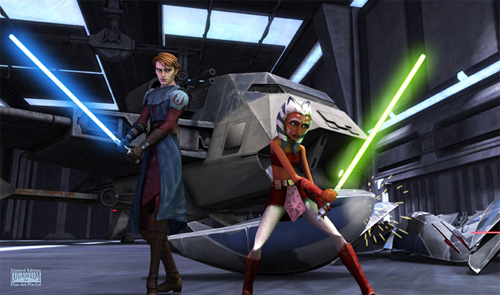
I think that the biggest, most notable offender in the continuity-altering fraternity is George Lucas. Setting aside woeful dialogue and a forced romance story between Amidala and Anakin, there are too many continuity problems with the Prequel Trilogy and the still-ongoing Clone Wars storyline. And it’s not even the fact that the Prequel-Jedi fight like giddy ninjas after swimming in a vat of caffeine. There’s the problem of higher levels of tech in the prequels and Anakin having an intern that’s never mentioned again. I mean, it only makes sense that Anakin and Obi-Wan got up to some shenanigans in between the events of Episode V and Episode VI but there’s only so much you can shoehorn in before it goes from the sublime to the ridiculous. You just know that George Lucas is cracking up that there’s a line on Revenge of The Sith where General Grievous says he thought that Anakin would be taller when they meet, evidently for the first time. If Anakin and Grievous ever meet face-to-face in the Clone Wars animated series, the Internet will break in half. But technicalities are powerful things, and I won’t be at all surprised if the two of them do meet in the animated series, but in a dark room. Or Grievous will suddenly lose his sight while meeting Anakin.
And as for the difference in fighting style between the original movies and the prequels, when you end up getting made a joke of on the Gilmore Girls, you just know that you’ve gone a little bit too far. But in fairness, it was a very good joke.
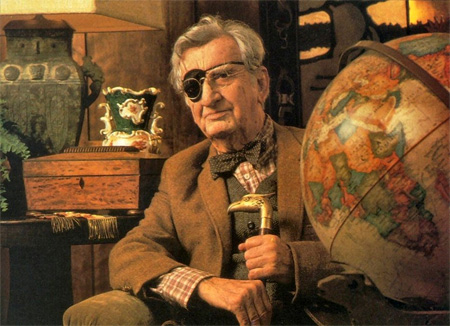
Another offering from the land of Lucas, The Young Indiana Jones Chronicles is currently contradiction-free, and indeed the stories told in the prequel television series tie in closely with the movies, providing a lot of back story for them, especially on the relationship between Indiana Jones and his father. But, every silver lining has a cloud, and the cloud is this: Indy movies are still an ongoing venture and the movie makers don’t feel the same need to tie in with the TV show as the makers of the TV show did to tie in with the movies. Steven Spielberg is a big part of the Indy movies, and Spielberg… wants to kill Indiana Jones. On the face of it, that’s not a huge problem, there’s nothing wrong with a heroic death. But The Young Indiana Jones Chronicles features in each episode an old grizzled, ninety-three-year-old Indy telling the story of the episode. If Indy dies in his sixties on the big screen, having a ninety-three-year-old Indy telling tales might be one hell of a contradiction.
The prequel that bothers me the most, though, is the Star Trek prequel Enterprise. The Trek franchise has always suffered from continuity flaws, mainly down to the fact that it had too many writers involved in its creation and most of them just wrote to suit their own needs. This is why the Trill in TNG have an insurmountable problem that isn’t even mentioned by the Trill in DS9. But Enterprise seemed to almost pride itself on messing with continuity and then using technicalities and semantics to wrangle out of the contradictions. In the Original Series, Kirk is said to be in command of the first Starship Enterprise. Clearly, the ship in Enterprise is named Enterprise. We know that before even watching the first episode due mainly to the fact that the name of the series is Enterprise. But apologists for the show will tell you that the Archer’s ship, the NX-01, was the first Earth Starfleet starship of the name, not the first Federation ship of that name. That’s almost enough of a technicality to let it swing, but if that was the case, why is there no model of the NX-01 on the wall of Picard’s Ready Room in TNG?
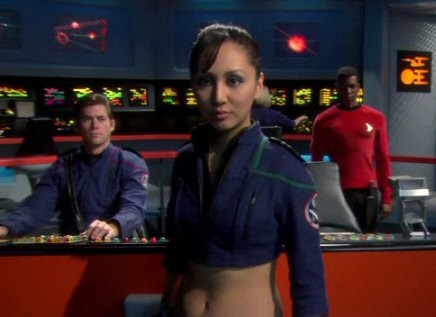
There are first contact issues that Enterprise raises too, with Archer and his crew coming across other races far too early in the established timeline. We could maybe call this “The Smallville Effect.” At the time of TOS, McCoy states that the first contact with the Klingons led to a fifty-year blood feud that was continuing to that day. The events of Enterprise take place roughly one hundred years prior to TOS. Now, I know that McCoy is a Doctor and not a calculator, but I don’t think he’d forget to mention forty years of hostilities so easily. There are so many other continuity problems with Enterprise that I could spend about a week naming them all, but the one that always stays with me is the problem with the alternate universe episodes. Don’t get me wrong, the two-part episode set entirely in the alternate universe of “Mirror, Mirror” was a highlight of the series for me and in no way, shape or form would anyone from the “original” universe have any knowledge of the alternate universe, but in the alternate universe, wouldn’t someone — anyone — have mentioned the fact that Evil Hoshi took command of the Empire when she got her hands on a ship from the future of an alternate dimension? I know that sometimes things get lost in the middle of a conversation, but you’d think Spock would have mentioned that he knew where Kirk and Co. came from.
And in the world’s worst segue, that brings me back to Caprica. The show lasted only eighteen episodes and wasn’t popular with a lot of the fans of Battlestar Galactica, but the show was fiercely intelligent, and in an unusual move for a prequel… it didn’t contradict anything that was laid down in Ronald D. Moore’s first BSG show. That’s not to say that the show didn’t nearly falter and make a major blunder.
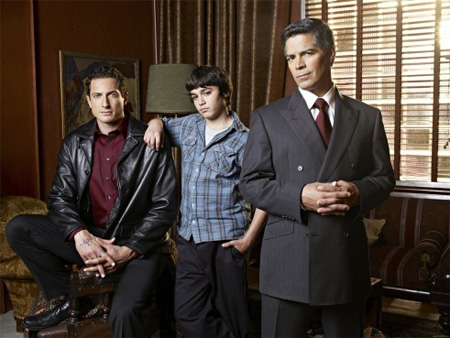
I heard about Caprica before I ever watched an episode of Battlestar Galactica and the impression of the show that I got from half-read articles and half-ignored conversations was that the show was basically going to be the wacky adventures of little William Adama. I was wrong for a couple of reasons, the first of which being that the show was about the creation of the Cylons and their eventual integration into human society. The second reason was that the William Adama who we see getting into various shenanigans throughout most of Caprica isn’t actually William Adama. The producers of the show realised that the William Adama who we saw in the prequel series would have been about seventy years old at the time of the fall of the Twelve Colonies. So, instead of having a glaring error running around for fifty eight years, they did the only sensible thing, which was clearly killing off William Adama and replacing him with… William Adama. Sound complicated? It’s not really, it’s just a case of the producers of a show actually giving a damn about the stories that they’ve crafted and crediting their audience with some decent level of intelligence.
We’ll get to see the wacky adventures of Willie II some time this year in Battlestar Galactica: Blood and Chrome. The show has to walk the line between what came before and what will come after. It has to show us a war that we’ve already seen the end of. It has to show us the journey Willie II must take in order to one day become the Commander Adama we see in BSG. But most of all, it has to be a good, entertaining show. I think that when we see the Battlestar Galactica on our screen again, we’ll feel like we’re home and we can be confident that the stories will make sense.
So say we all.


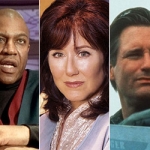
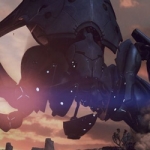
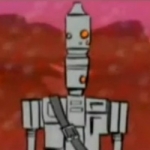

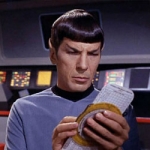
 Simon FitzGerald isn't your average Irishman. He has an unhealthy addiction to TV, movies and comic books and uses the word "awesome" far too much Though he does enjoy a pint as much as the average Irishman.
Simon FitzGerald isn't your average Irishman. He has an unhealthy addiction to TV, movies and comic books and uses the word "awesome" far too much Though he does enjoy a pint as much as the average Irishman.
Hey, nice post. I didn’t read all of it, but focused on the Battlestar Galactica / Caprica stuff, because I found this blog by searching for plot contradictions between the two series. I just finished watching Caprica and believe there are contradictions and I wanted to see what others were saying about it. You have a point about Adama, but to my memory, in BSG, the “skin-jobs” were created in an aliance between the ancient race of Cylons, of which the Final Five came from, with the new cylons that the humans created on Caprica. The Final Five also developed resurrection technology, I thought. Or maybe it was that cylons from Caprica had resurrection and the skin jobs from earth had a biological model for reproduction and all the bio-technology that the cylons used to develop their whole future world- from the base ships to the raiders to the skin jobs.
So the whole end of Caprica, where the Greystones create the skin job of Zoe, is in total contradiction to what BSG says, unless the whole story of the final five was a complete delusion that they falsely had programmed into their memories– but then it would have been in all the cylons’ memories, since they had legends of it. The Final Five were supposed to have been traveling through space for 3,000 years after the destruction of the original Earth, where they (and ‘All Along the Watchtower’) were from. Then the Number 1 skin job (the Quantum Leap guy) killed them and had them be reborn without their memories and planted into the human race and on Galactica’s crew.
So, I think there were some major contradictions between Caprica and BSG- if I’m wrong, please clear up for me what really happened. Thanks.
Oh, well, as I read other websites, there’s speculation that the Zoe “skin job” wasn’t supposed to be a true biological skin job like the ones the final five created. That’s why we see her for a second look like a machine, then be covered with skin. Fair enough- obviously they were coming up with stuff pretty quickly and scrambling to put in as much as possible in the last few minutes. Still- why even have this one skin job when no human has ever seen or heard of a skin job in BSG. I think they just wanted to make as many connections to BSG as quickly as they could to get fans excited, even if it didn’t really make sense given BSG’s plot.
Also- while I really liked the exploration of monotheism in Caprica, it also doesn’t make sense that no one in BSG would ever mention this monotheistic terrorist religion that was antagonistically thriving on Caprica 60 years before the 2nd Cylon War. Everyone in the Caprica series knows about it.
To be fair- they came up with the idea for all that after BSG was all over and done with, of course. And I’m fine with it- but I don’t think we can praise the show for keeping this amazingly rigorous continuity just because they kill off the one Willy Adama and have another one. That’s small potatoes compared to all these things that they simply couldn’t reconcile continuity-wise with the original, but wanted to have in the prequel because it was cool- like the STO Monotheists and the skin-jobs. (and of course the whole V-world, which no one seems to know about at all in BSG)
All that said, again, I thought Caprica was amazingly creative and did live up to its rep as a prequel to a great show by trying to be as interesting as the original conceptually. But I don’t think continuity was it’s strong suit. (Nor was its theme song or title sequence, frankly- after the AMAZING intro to BSG with the beautiful setting of the Gayatri Mantra, and the elegent visuals of the war, how could they come up with something as lame as they did for Caprica)